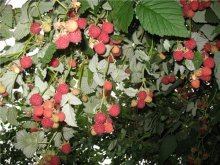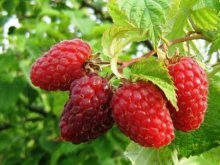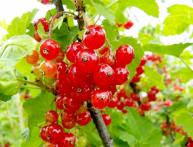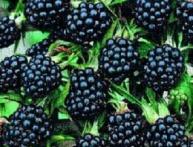Raspberry Gusar: description, advantages and disadvantages of the variety
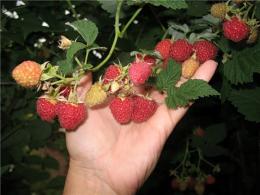
Raspberries are a popular berry plant in amateur and professional gardens. All garden varieties and hybrids originated from the common raspberry, which grew in abundance mainly in Asia and other fairly warm regions. The first mention of the cultivation of raspberries in Russia dates back to approximately the 12th century.
In the 17th century, raspberries were already widely grown in Russian gardens. But breeding work to develop garden large-fruited, remontant and other varieties of red, yellow, black raspberries began actively at the end of the 19th century and continued throughout the 20th century.
Content:
- A little history of selection
- Description of the variety, its advantages and benefits
- Disadvantages of the Gusar variety, choosing the right seedling
A little history of selection
Bryansk breeder Ivan Vasilievich Kazakov has been studying this crop for more than forty years. He laid the foundation not only for the first domestic varieties remontant raspberries, but also bred many large-fruited, disease-resistant representatives of this popular berry.
Today, many “Kazak” varieties are grown not only in Russia, but also in the near and far abroad:
- Indian summer
- Penguin
- Fugitive
- Balm
- Shy
The Gusar raspberry variety is one of these favorite varieties; the description of its advantages speaks for itself.
Description of the variety, its advantages and benefits
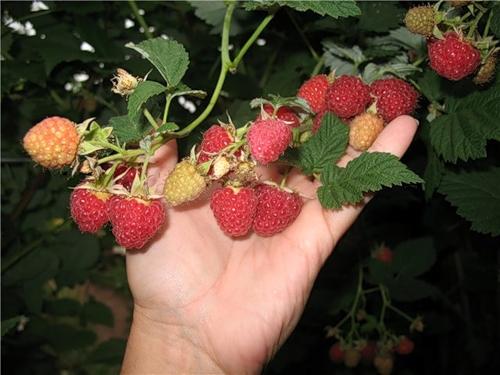
Variety garden raspberries Gussar belongs to the “golden varieties” bred by I.V. Kazakov. In mass gardening - since 1999.Over the past years, what has made this raspberry popular is primarily its unpretentiousness. To obtain a bountiful harvest of berries from Gusara bushes, no special knowledge, skills or excessive effort is required.
- Gusar raspberry bushes are strong and tall, up to 1.8 m, but can exceed 2 - 2.5 m in height.
- The presence of a small number of thorns located only in the lower part of the shoot makes harvesting easier.
- The shoots have a slightly reddish color at the base and a pronounced waxy coating, which protects them from moisture loss and makes the plant quite drought-resistant.
This allows us to recommend Gusar raspberries not only for the middle zone, but also for the southern regions with insufficient precipitation. The shape of the shoots is straight and does not require garter.
A distinctive feature is the absence of abundant root shoots; a maximum of 8 - 10 root shoots arise from one rhizome. This makes it easier to grow berries in small garden plots and does not require huge efforts to remove unwanted shoots.
To the next advantage of the variety refers to its productivity. Under favorable weather conditions and following simple agrotechnical rules, one Gusar raspberry bush can produce more than three kilograms of aromatic berries. Considering that this raspberry has a medium-early ripening period, it has enough favorable sunny days to achieve full ripeness in almost any region. She manages to produce the main harvest of berries before the onset of unfavorable weather periods in most areas.
But the main advantage of the variety is its large, elongated berry with a blunt end. Average size - from 4 g. At the stage of final ripeness, Gusar raspberries acquire a rich dark ruby color.The pulp of the berries is dense, they stick well to the bushes, do not rot, do not crumble when picked, and tolerate transportation well over long distances.
Berries are universal. Dessert, sweet and sour taste, pleasant aroma, high content of sugars, from 7 to 10%, and vitamins, up to 37%, makes them suitable both for fresh consumption and for processing into compotes, preserves, jams.
Good presentation and high yield, up to 84 centners per hectare, make the variety attractive for cultivation for sale in farms and household plots.
A huge advantage of the Gusar variety is its resistance to most diseases that affect raspberries. When developing the variety, Kozakov took the tall, productive raspberry of the American variety Canby as a basis. The breeder used the technique of cross-pollination with varieties resistant to viral diseases. As a result, a new variety was obtained, which in many respects was superior to the parent forms.
Disadvantages of the Gusar variety, choosing the right seedling
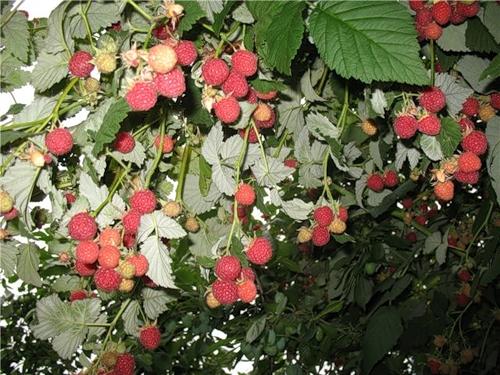
First of all, powerful bushes require quite a lot of space; the distance between plants should be left at least 80 - 100 cm, and row spacing should not be narrower than 1 - 1.5 m.
If the growth of the bushes exceeds 1.8 m and reaches 2 - 2.5 m, then trellises must be installed to support and secure the raspberries. With such growth, the bush needs to be tied up at regular intervals, at least two to three times. A garter will allow you to preserve the harvest of berries both on the upper and lower tiers of the plant.
The variety tolerates well severe winter frosts covered, but with the onset of thaws followed by frosts, the root system is susceptible to icing, leading to the death of the entire bush.This is especially dangerous for young raspberry seedlings planted in autumn.
Being a reliable, proven variety, Gusar is still inferior to some modern representatives with higher yields, yielding up to 100-120 centners per hectare and having a berry size of over 10 g.
There are also varieties that are superior to Gusar raspberries in taste, contain significantly more sugars and produce a more uniform harvest of berries in size.
Selection of seedlings
It should be borne in mind that you should purchase Gusar raspberry seedlings only from trusted fruit nurseries and garden centers. Otherwise, if you purchase a plant from unscrupulous sellers, you may not receive the declared benefits of this variety.
It is worth noting that when implementing raspberry seedlings A hussar with an open root system, the upper part of the shoot should not be longer than 40 - 45 centimeters, and the root system should not be shorter than 15 cm. In addition, such a seedling, which already has fully open leaves, is unlikely to take root in the garden; most likely it will not last long get sick and die.
The best seedling will be the one whose only shoot has a base thickness of approximately one centimeter.
It is better to refuse the purchase if the purchased specimen does not have external varietal characteristics, looks weak and unviable.
In general, although the Gusar raspberry variety has some drawbacks, it deserves to be used to replace low-yielding raspberries of unknown origin in the garden plot.
Watch an interesting video about the best varieties of raspberries:
Interesting information about the vegetable garden

